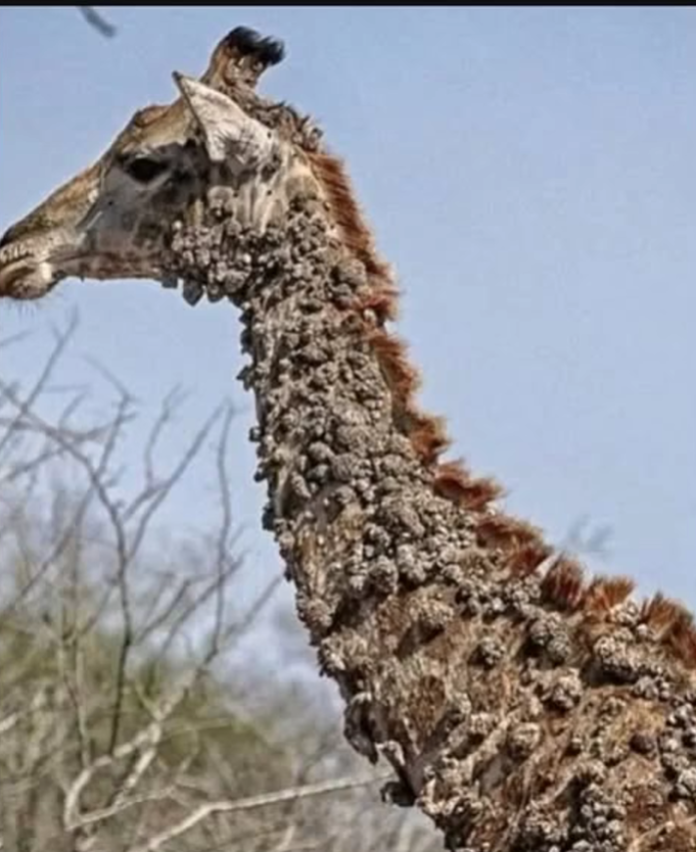A giraffe in South Africa’s Kruger National Park is drawing global attention after being seen with bark-like growths along its neck. From a distance, it eerily resembled part of a tree, blending almost perfectly into the dry landscape. These odd formations are caused by papillomavirus, a viral infection that creates thick, crusty skin lesions. Though startling in appearance, the condition isn’t life-threatening.
Experts say the virus can irritate the skin and lead to secondary infections, especially if the lesions are scratched or broken open. In giraffes, it often spreads through oxpeckers—small birds that feed on parasites but may unintentionally worsen wounds. This dual role of oxpeckers highlights the delicate balance in wildlife ecosystems. Even helpful creatures can sometimes cause harm.
Photographer Helen Olive first noticed the giraffe and at first mistook it for part of the landscape. “It looked like a tree until it moved,” she recalled, describing the surreal moment. Her photos quickly went viral, sparking curiosity and concern across social media. Despite its strange look, the giraffe appeared to be moving and feeding like any other.
Papillomavirus affects many animals—like humans, cattle, and rabbits—but each type is species-specific and not spread between them. South Africa’s giraffe numbers have grown to over 30,000, a hopeful sign for conservation. Still, cases like this reveal hidden threats in the wild. Nature often masks its hardships beneath a surface of beauty.


